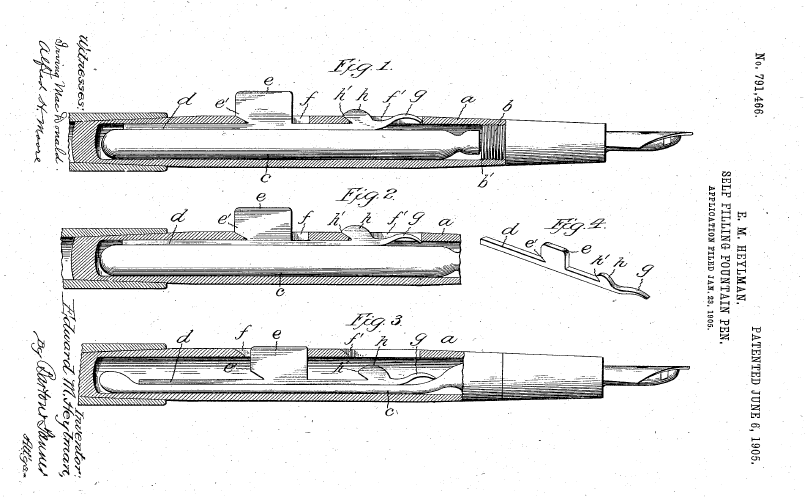On paper, the mechanism to lock the hump seems simple and elegant. There are no separate moving parts. In practice, the pen looks a bit odd. It is even more out of place for Parker, a company that otherwise took pride in pens that did not have levers, bars, protrusions, or anything else but a smooth barrel. The pressure bar has two humps, protruding through two slots, as well as something the patent refers to as a “spring locking tongue” next to the secondary smaller hump.
To disengage the lock, press on the spring locking tongue to dislodge it off the edge of the slot and into the barrel. Then the hump(s) can be pressed as normal. To lock it again, pull back slightly on the hump and the spring locking tongue clicks back into place, securing the hump and pressure bar. These are uncommon pens kept hidden away by Parker collectors. I finally secured one in rough condition with an incorrect nib that suits my collection just fine since it is functional and shows the “technology” well.


